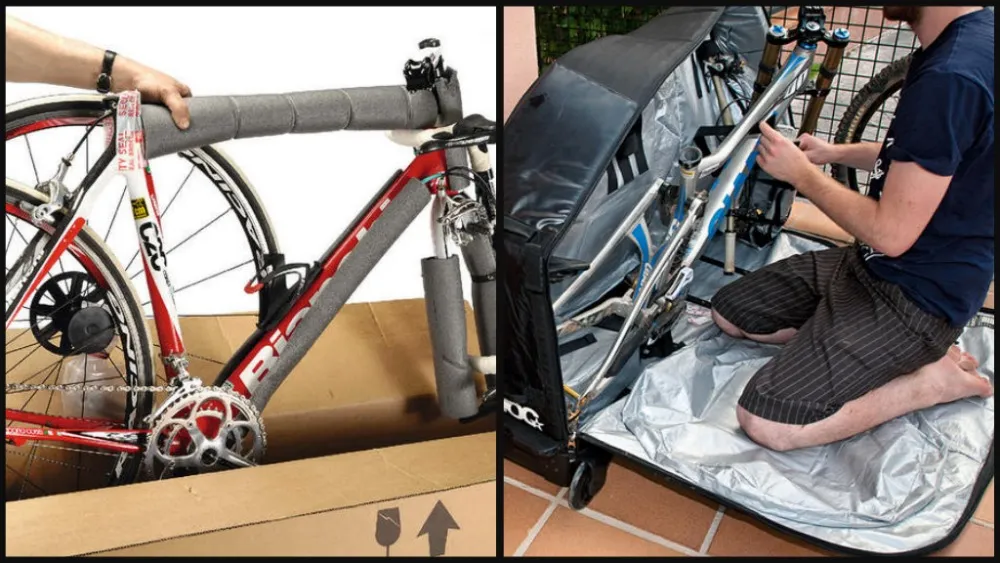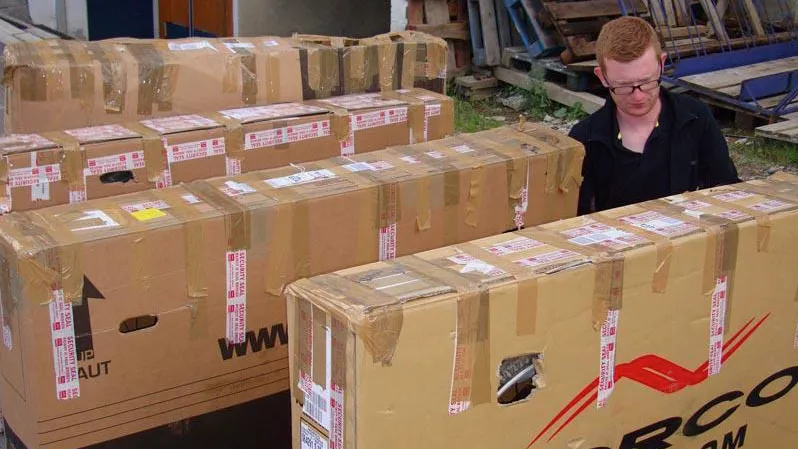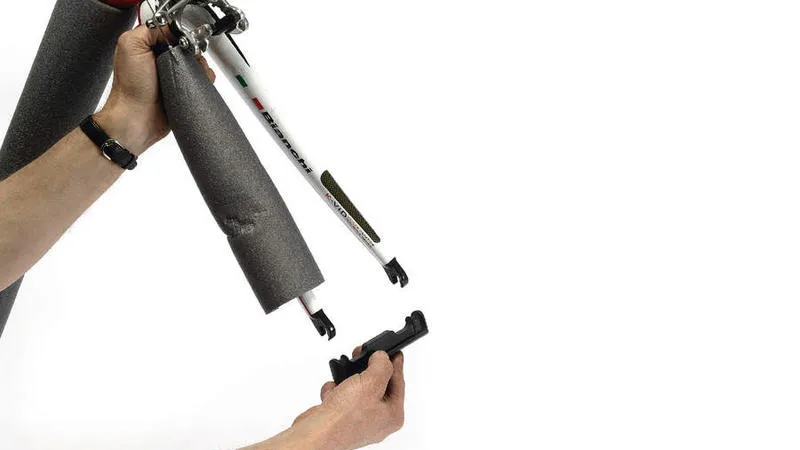Your cycling holiday's booked and you're counting down the days until you can jet off. The tricky part you're probably most worried about is taking your bike on a plane with you. We'll explain how to pack your road bike for a trip abroad.
Flying can be stressful at the best of times, let alone when you add the anxiety of handing your precious road bike to the baggage handlers – and incurring unexpected excess baggage fees. So let's get you and that bike to the other side with minimum fuss.
- How to pack your mountain bike up for travel
- Best bike boxes and bike bags
- Six essential tips for booking your first cycling holiday
Joe Norledge gives his tips for safely packing a bike
Bike bags vs bike boxes
Whether you opt for a bike bag or bike box really depends on the amount of travelling you do, and the type of bike. If it’s just an occasional overseas trip then a bag offers unrivalled value, and can be stored more easily when not in use. However, if you travel a lot and want your bike to have the ultimate in protection, we’d opt for a hard case.
If you're on a tight budget and can't stretch to either option, try asking your local bike shop if they have any spare cardboard bike boxes. These are extremely lightweight, helping to avoid excess baggage charges, but they definitely aren't as durable, and don't offer anywhere near the same level of protection as a fabric bag or box.
Most airlines require bikes to be either boxed or bagged for travel. A decent bike bag can cost anywhere between £60 / US$90 and £500 / US$900, which we'd say is a worthwhile investment if you intend to fly with your bike often, or even if you regularly transport your bike by train, bus or car. It's also an excellent option for long-term storage.
Hard bike cases offer the best protection, but are a real pain to stash in the back of a hire car or hotel wardrobe. They're also heavier and more expensive: they start at around £299 / $400, and can reach £700 / $1000 for something delux like the Scicon Aerotech Evolution.
Read our guide to the best bike boxes and bike bags for lots more suggestions.

How to pack your road bike
To pack your bike, you'll need the relevant bike breaking-down tools, pipe lagging/bubble wrap, zipties/toe straps, a rag, some spare cardboard and duct tape. If you can get those plastic fork/rear end spacers from the local bike shop then all the better. It's worth mentioning though that many of the latest bike bags and boxes include many of these packing accessories as standard, so check the spec before you buy.
It's also worth mentioning that the process for packing your bike varies from bike bag or box: for example, Scicon AeroComfort bags don't need you to remove handlebars, saddle or seatpost. So read the manual it came with first.
1. Remove pedals, seatpost and saddle
Take off your pedals, tape them together and tape the threads, then carry them in your regular luggage if you don't have a bag with side pockets. Don't leave these items loose in the bike bag, as they could rattle around and damage things.
Remove your seatpost and saddle, or lower it to its minimum height (as long as this doesn't scratch the post). Make sure the clamp is either lightly tightened or removed and carried in separate pocket.
2. Remove the wheels
Remove the wheels, deflate the tyres slightly as it'll be going in the airplane's hold (don't deflate them too much as this can cause rim damage if the bag gets dropped). Take out the quick-release skewers and tape them to the spokes, or stash them safely in any bag pockets available.
If you have plastic fork/rear triangle spacers (which come with new, boxed bikes and forks – your local bike shop might let you have some), put them in place.
3. Remove the rear derailleur
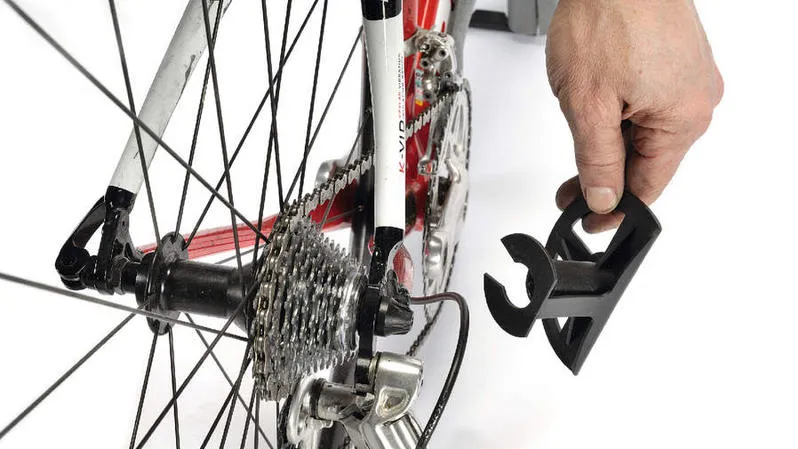
Remove the rear hanger and derailleur, and then tighten the hanger bolt so as not to lose it in transit. Wrap the mech in bubble wrap or a rag and strap it between the rear stays, so that the hanger doesn't get bent or the chain slap around against the frame.
4. Sort out the handlebars
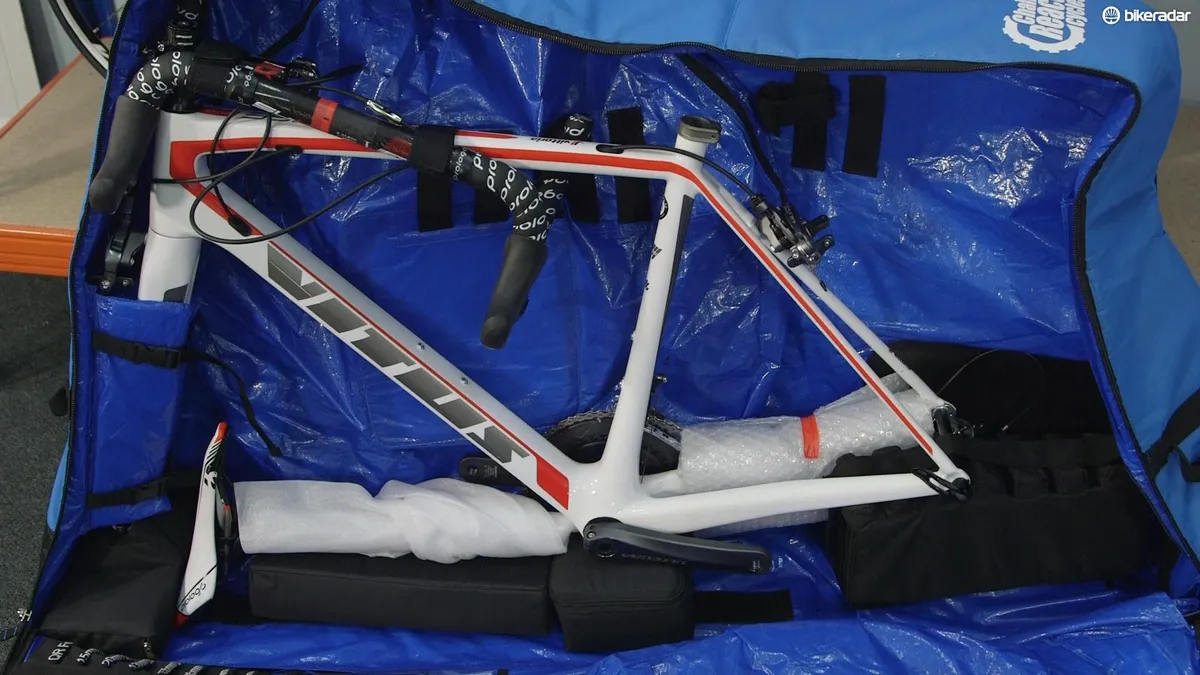
Depending on the size of your bike and bag, either turn your stem sideways and turn your bars downwards and under the top tube on the chain side (padding the top tube and strapping the bars against it), or, if the bag is too small, remove the bars and strap them in that position (try to leave the stem on or strap/ziptie your forks and head set together to prevent the loss of headset parts).
5. Get the cranks and chainrings into position
Turn the cranks parallel and pad the bottom of the chainring. Add foam padding (pipe lagging can be bought from your local DIY store) to the main tubes and anywhere else likely to get scratched in transit.
6a. Bag it up
Unless your bag has a hard base then the bike goes in the bag upside down to protect the chainrings. If the bag has padded wheel bags then use these and place the wheels on either side of the bike, staggered for less bulk.
If you have no wheel bags then follow the padding procedure as with the box, but strap the wheels on the chainside of the frame, staggered for less bulk. It does not pay to padlock the bag, as security may wish to open it – but a ziptie between the zips will aid security and can easily be cut when you arrive.
6b. Box it up
If you are using a box then place the bike inside, normal way up, and then put in both wheels. One wheel goes to the front and the other towards the back of the bike (both chain side), with sprockets in the gap in the frame.
Pad the contact points or or put cardboard sections in-between, and ziptie or strap the wheels to the frame. Seal the box with duct tape and be sure to write your contact/destination details and flight info on the box.
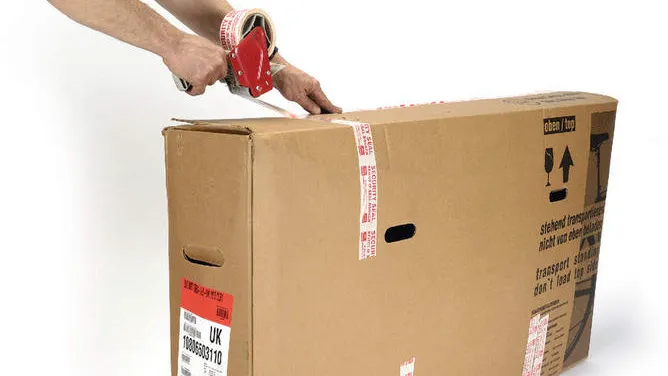
7. One final tip – important
Always check your bike for damage/loss before clearing customs, otherwise the airline's liability is limited. Be sure to get written confirmation of any damage from baggage handlers too.
